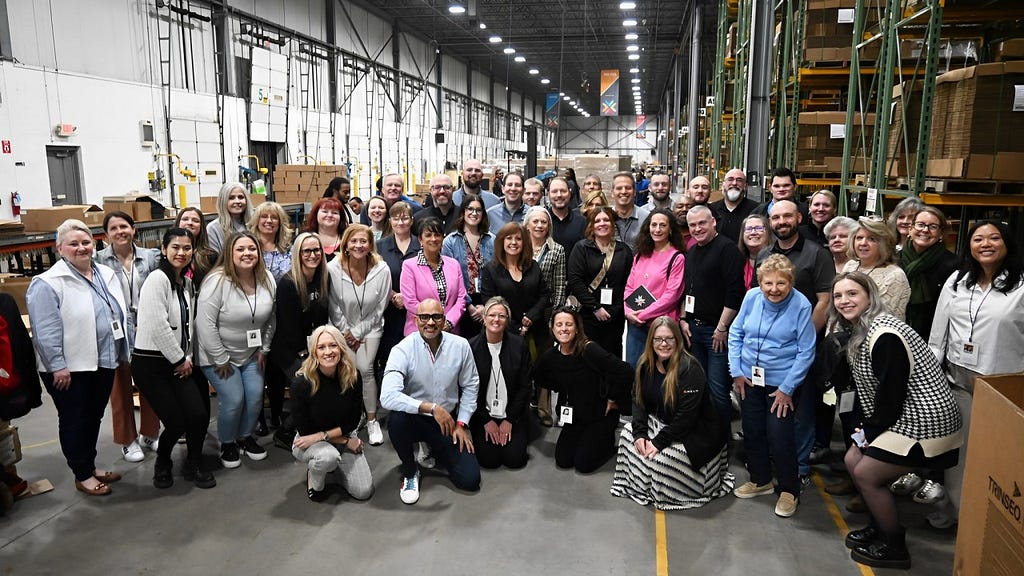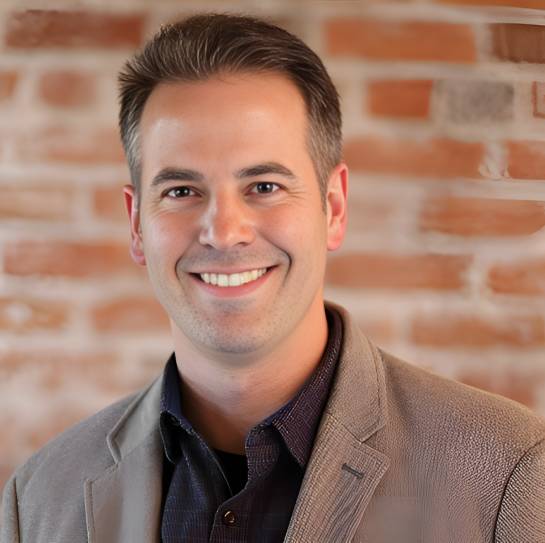Breaking the Marketing Mold: Rob Ross Of Helm and Target Marketing Group On 5 Innovative & Non Traditional Marketing Strategies That Can Engage Audiences Like Never Before
An Interview With Chad Silverstein
Sustainable products — Emphasize environmentally friendly and sustainable products and branded merchandise. While budget constraints are an important consideration for many brands, consumers are increasingly willing to invest in sustainable choices.
Traditional marketing methods are no longer sufficient in today’s dynamic and fast-evolving market. To truly engage and captivate audiences, businesses need to think outside the box and adopt innovative and non-traditional marketing strategies. What are these strategies, and how can they transform audience engagement? I had the pleasure of interviewing Rob Ross.
Rob Ross serves as the President and COO of Helm and Target Marketing Group (TMG). An industry veteran with over 30 years of experience, Ross brings a wealth of knowledge in branded merchandise and promotional products. Before joining TMG, Ross spent two years as president of HALO Detroit and 12 years at Chamberlain Marketing Group in Detroit as chief operations officer, where he helped grow CMG into one of the top distributors in the industry.
Thank you so much for joining us in this interview series! To start, could you share when and how you got started in marketing?
I got started in marketing over 30 years ago now. I received my degree in International Marketing from the University of Michigan, and in my sophomore, year began working at a company called Creative Concepts in Advertising. Since then, I’ve been able to work at a number of top marketing firms and promotional product companies. I joined Target Marketing Group (TMG) in 2022, and since the acquisition by Helm earlier this year, now have the pleasure of serving as president and COO of both Target Marketing Group and Helm.
What has been the biggest shift in the marketing industry, and can you give us an example of how it impacted you?
The rise of digital and data-driven marketing has been extremely transformative in the industry. We’re seeing the influence of traditional marketing avenues like TV and print media become significantly reduced, which is both exciting and a bit unsettling. Throughout my career, there have been three major shifts in the industry, particularly over the past 20 years: the rise of the internet, the advent of smartphones, and now the emergence of artificial intelligence (AI). Each of these developments has profoundly changed not just marketing but the world at large. We’re only beginning to see the full impact of AI and data-driven strategies, and it’s going to be fascinating to watch how these continue to evolve.
Can you explain why it’s essential for businesses to break away from traditional marketing and embrace new strategies?
Consumer behavior has dramatically shifted over the years and will only continue to do so. If businesses don’t stay on top of these consumer changes, they’ll be left behind by the competition. People are now spending more time online and engaging with content in increasingly interactive ways. To remain relevant, companies must adapt to these new dynamics and ensure they’re meeting consumers where they are.
Could you share and briefly explain the first major change you made to break the trend of traditional marketing that was not so common?
This isn’t necessarily considered a groundbreaking change now, but when many companies were still focused on broad, traditional marketing approaches, the companies I worked for took a different path. Instead of casting a wide net, we opted for more targeted and tailored marketing strategies, focusing on specific audiences or segments where we knew we could excel. While others were trying to sell to everyone, we asked ourselves, ‘How can we be the best in this industry?’ That’s the approach we’re taking at Helm today. We aim to provide services to a wide range of clients, but we’re particularly focused on our strengths — servicing automotive manufacturers and large-scale programs with diverse customer bases across generations. We bring over 80 years of experience in the field, and the long-standing relationships we still maintain with some of the top brands in the automotive industry reflects this. By staying targeted, we can deliver exceptional value where it matters most to our clients.
What specific results did you see after implementing this change?
With any project or change, you have to take a look at the specific goals around it. Of course, the key metrics we look at include increasing engagement, higher conversion rates and improved customer retention. At the end of the day, the dream result is to see the content and the information we provide resonate with our audience and provide a stronger brand connection. Taking a targeted approach has been instrumental in consistently achieving the results we hope for with each project.
How do you ensure that these new marketing strategies resonate with your target audience?
To ensure our new marketing strategies resonate with our target audience, I collaborate closely with my marketing team to continuously monitor engagement metrics and gather feedback. We regularly review analytics to assess effectiveness, refine our strategies and make sure we stay relevant and impactful.
Can you share an example of something you tried that didn’t deliver expected results or ended up ended up becoming a financial burden, and what you learned from that experience?
A while back, we tried a campaign where we sent out marketing boxes to a wide audience, but the products inside weren’t tailored to any specific industry — they were a bit all over the place. While the boxes were high-quality and ultimately well-received, the lack of a clear strategy behind the selection of items meant that we didn’t see the return on investment we had hoped for. The experience taught us the importance of aligning our marketing efforts with a focused strategy to ensure they resonate with the right audience and deliver the expected results.

Great. Now, let’s dive into the heart of our interview. Could you list “5 Innovative & Non Traditional Marketing Strategies That Can Engage Audiences Like Never Before”?
- Personalized email campaigns — Leverage data to send highly personalized content relevant to individual recipients. A non-targeted approach simply will not be as effective as tailored messaging.
- Experiential marketing — Create memorable experiences such as events, concerts, or virtual experiences that connect the brand directly with consumers. Providing a unique experience can set brands apart from the competition and encourage engagement with customers.
- Influencer partnerships — Collaborate with influencers on platforms like TikTok to leverage their reach and authenticity in promoting your brand. We’re seeing more and more brands implement influencer partnerships into their key marketing strategies.
- Data mining — Gather and analyze data from past orders and customer experiences to tailor marketing efforts and reach out to previous buyers with targeted offers. Using key data points helps ensure marketing tactics are strategic.
- Sustainable products — Emphasize environmentally friendly and sustainable products and branded merchandise. While budget constraints are an important consideration for many brands, consumers are increasingly willing to invest in sustainable choices.
What challenges might companies face when transitioning away from traditional marketing strategies, and how can they overcome them?
The biggest challenge companies face when transitioning away from traditional marketing strategies is resistance to change, whether from the internal marketing team, sales staff or support team. People are often hesitant to shift away from familiar approaches. Another significant challenge is the reluctance to invest in new tools, especially when some AI tools are free, but the more robust, effective ones can be quite expensive. For example, whether you’re using basic tools or more advanced platforms like HubSpot or ZoomInfo, the cost can be a barrier. Some companies fully integrate these tools to generate new leads and opportunities, but those that only dabble in these tools limit their potential effectiveness. Overcoming these challenges requires clear communication about the benefits of change and a willingness to invest in the right tools to stay competitive.
How do you measure the success and ROI of these new marketing strategies?
I focus on a few key metrics to measure the success and ROI of new marketing strategies. First and foremost, sales are crucial — if we’re selling more than before and hitting our KPIs, that’s a strong indicator of success. Conversion rates are also important. If we’re reaching out to 1,000 people and achieving a 5% conversion rate, that’s significant. Finally, the overall revenue impact from increased marketing efforts is a critical measure. These factors — sales, conversion rates, and revenue impact — are the primary ways we gauge the effectiveness of our strategies.
Looking forward, how do you see the role of innovative marketing evolving in the next 5–10 years?
Innovative marketing over the next 5–10 years feels like the wild west, with AI and new technologies constantly reshaping the landscape. The definition of “innovative marketing” is changing daily as new AI and technology tools are produced or improved daily. From a business perspective, these advancements are exciting and can have positive financial benefits. However, they may also reduce the need for entry-level positions in the marketing industry, where many people start their careers and gain the experience needed to become successful marketers, salespeople or business leaders. The loss of these opportunities could have long-term implications for the industry and the workforce. I’m enthusiastic about the potential of AI and eager to embrace it, but we need to be mindful of the broader impacts and ensure we’re balancing innovation without sacrificing the development of future talent.
What advice would you give to business leaders who are hesitant to move away from traditional marketing methods?
My advice to business leaders is to stay informed about industry trends and what others are doing so you don’t get left behind. If you’re cautious about adopting new marketing practices, start small and gradually expand as you see success.
Can you share any upcoming initiatives or plans you have for further innovating your marketing strategies?
We’re currently working on integrating with Facebook checkout pages, and we’re also creating lifestyle shots utilizing AI. Those are probably two of the biggest changes that we’re working on to stay on top of the emerging trends we’ve seen.
How can our readers follow your work and learn more about your approaches to modern marketing?
Readers can follow me on LinkedIn or check out Helm’s website to find out more about the innovative marketing and branded merchandise solutions we offer.
This was great. Thank you so much for the time you spent sharing with us.
About the Interviewer: Chad Silverstein, a seasoned entrepreneur with over two decades of experience as the Founder and CEO of multiple companies. He launched Choice Recovery, Inc., a healthcare collection agency, while going to The Ohio State University, His team earned national recognition, twice being ranked as the #1 business to work for in Central Ohio. In 2018, Chad launched [re]start, a career development platform connecting thousands of individuals in collections with meaningful employment opportunities, He sold Choice Recovery on his 25th anniversary and in 2023, sold the majority interest in [re]start so he can focus his transition to Built to Lead as an Executive Leadership Coach. Learn more at www.chadsilverstein.com
Breaking the Marketing Mold: Rob Ross Of Helm and Target Marketing Group On 5 Innovative & Non… was originally published in Authority Magazine on Medium, where people are continuing the conversation by highlighting and responding to this story.
